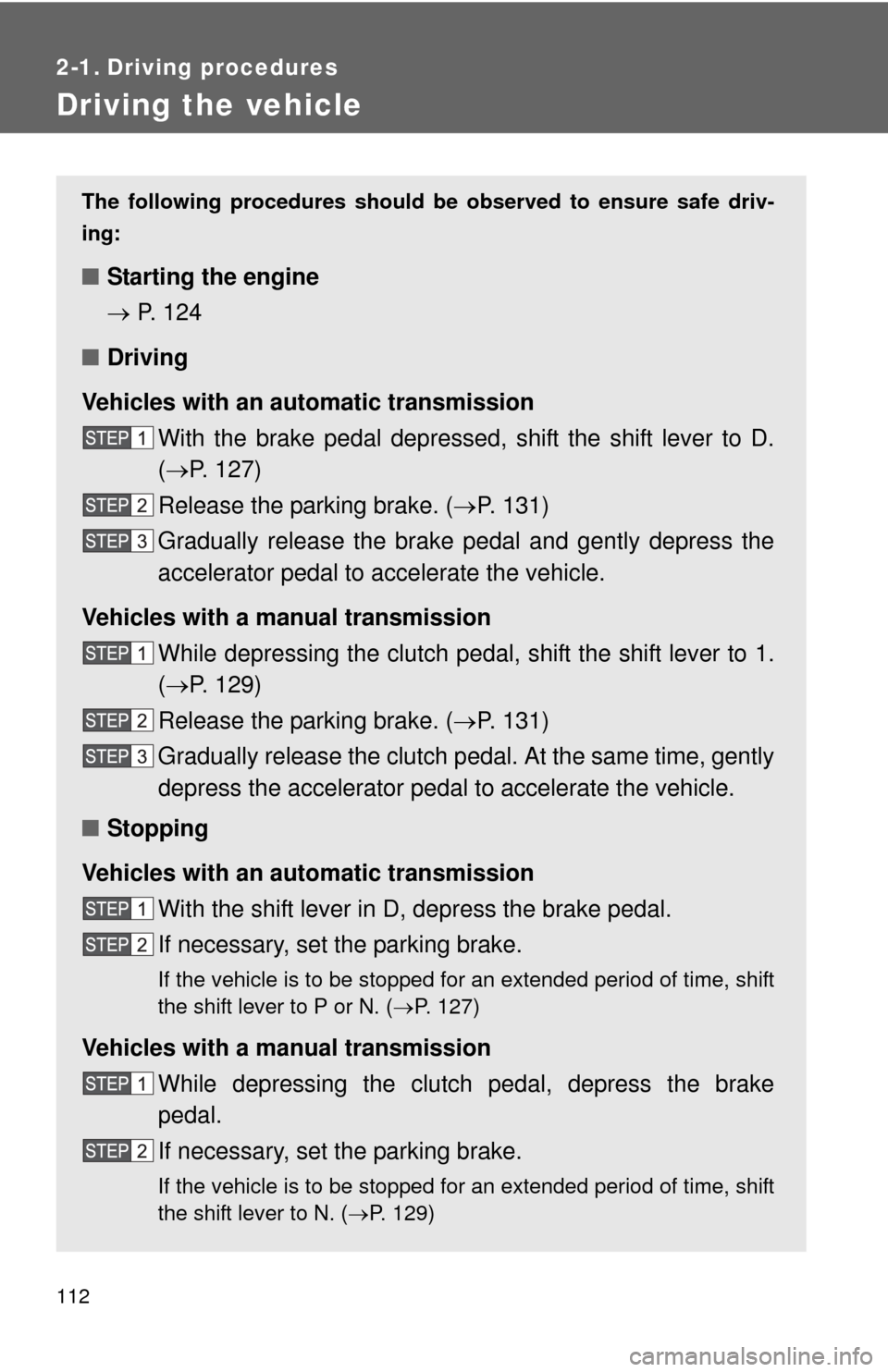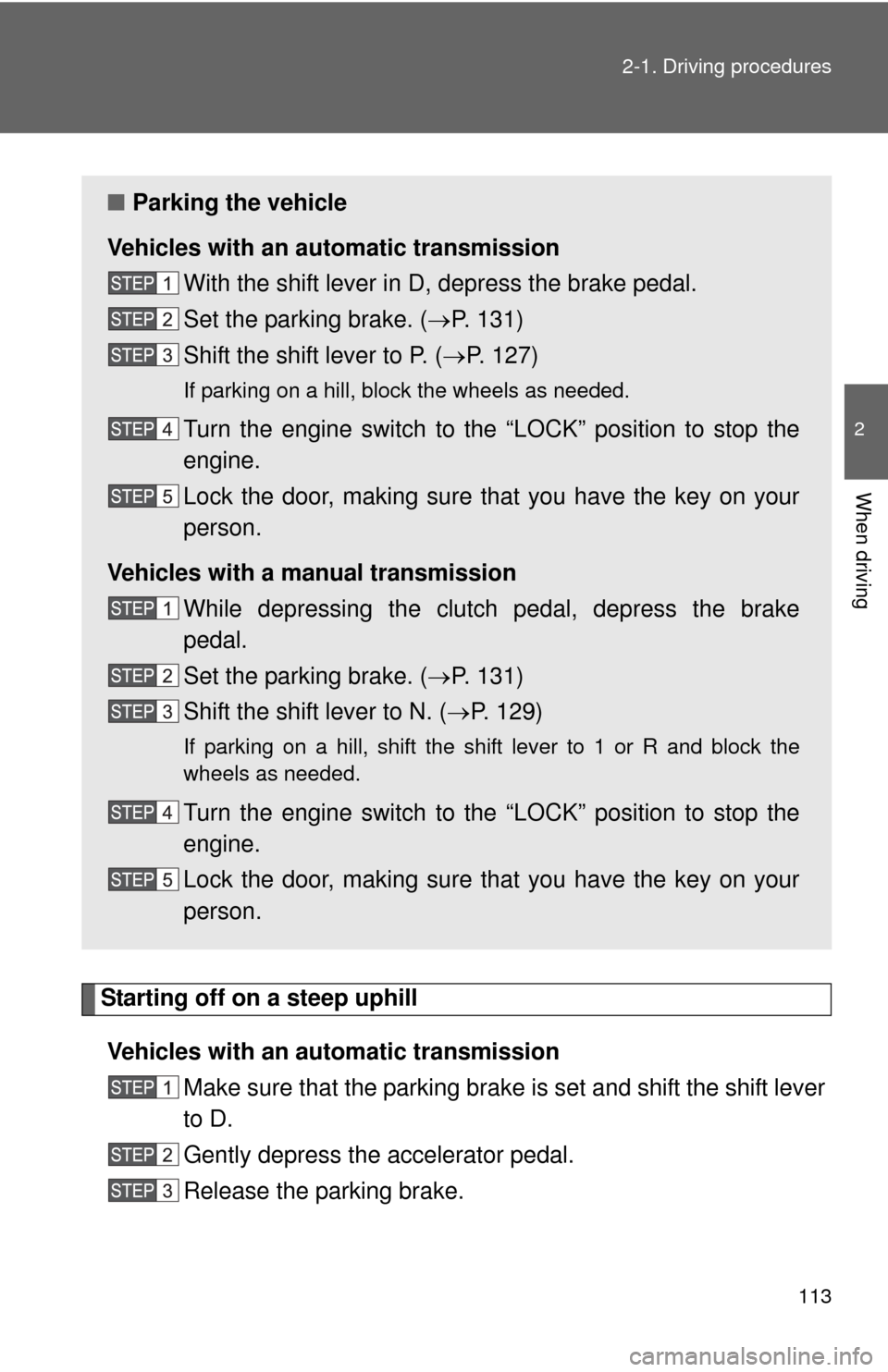Page 2 of 400

TABLE OF CONTENTSIndex
2
1-1. Key informationKeys ..................................... 28
1-2. Opening, closing and locking the doors
Wireless remote control ....... 31
Side doors ............................ 34
Back door ............................. 38
1-3. Adjustable components (seats, mirrors, steering
wheel)
Front seats ........................... 43
Rear seats ............................ 47
Head restraints ..................... 51
Seat belts ............................. 54
Steering wheel ..................... 62
Anti-glare inside rear view mirror .................................. 63
Outside rear view mirrors ..... 64
1-4. Opening and closing the windows
Power windows .................... 67
1-5. Refueling Opening the fuel tank cap .... 69
1-6. Theft deterrent system Engine immobilizer system ................................ 72
Alarm (Puerto Rico).............. 74
Theft prevention labels (except Canada) ................ 77 1-7. Safety information
Correct driving posture ......... 78
SRS airbags ......................... 80
Front passenger occupant classification system ........... 93
Child restraint systems ......... 98
Installing child restraints ..... 102
2-1. Driving procedures Driving the vehicle .............. 112
Engine (ignition) switch....... 124
Automatic transmission ...... 127
Manual transmission........... 129
Turn signal lever ................. 130
Parking brake ..................... 131
Horn .................................... 132
2-2. Instrument cluster Gauges and meters ............ 133
Indicators and warning lights ................................. 136
Multi-information display ..... 140
2-3. Operating the lights and wipers
Headlight switch ................. 145
Fog light switch ................... 148
Windshield wiper and washer .............................. 150
Rear window wiper and washer .............................. 153
1Before driving
2When driving
Page 14 of 400
14
Cup holders P. 205
Parking brake lever P. 131
Shift lever P. 127,129
Shift lock override button
P. 328
Pictorial indexInterior
VSC OFF switch P. 163
Cup holders P. 205
Page 21 of 400

21
Installation of a mobile two-way radio system
The installation of a mobile two-way radio system in your vehicle could affect
electronic systems such as:
●Multiport fuel injection system/sequential multiport fuel injection system
● Cruise control system
● Anti-lock brake system
● SRS airbag system
● Seat belt pretensioner system
Be sure to check with your Toyota dealer for precautionary measures or spe-
cial instructions regarding installation of a mobile two-way radio system.
Vehicle data recordings
Your Toyota is equipped with several sophisticated computers that will record
certain data, such as:
• Engine speed
• Accelerator status
• Brake status
• Vehicle speed
• Shift position (except manual transmission)
The recorded data varies according to the vehicle grade level and options
with which it is equipped. Furthermore, these computers do not record con-
versations, sounds or pictures.
● Data usage
Toyota may use the data recorded in these computers to diagnose malfunc-
tions, conduct research and development, and improve quality.
To y o t a
will not disclose the recorded data to a third party except:
• With the consent of the vehicle owner or with the consent of the lessee if the vehicle is leased
• In response to an official request by the police, a court of law or a govern-
ment agency
• For research purposes where the data is not tied to a specific vehicle or vehicle owner
Page 22 of 400

22
Event data recorder
This vehicle is equipped with an event data recorder (EDR). The main pur-
pose of an EDR is to record, in certain crash or near crash-like situations,
such as an air bag deployment or hitting a road obstacle, data that will assist
in understanding how a vehicle’s systems performed. The EDR is designed
to record data related to vehicle dynamics and safety systems for a short
period of time, typically 30 seconds or less.
The EDR in this vehicle is designed to record such data as:
• How various systems in your vehicle were operating;
• Whether or not the driver and passenger safety belts were buckled/fas-tened;
• How far (if at all) the driver was depressing the accelerator and/or brake pedal; and,
• How fast the vehicle was traveling.
These data can help provide a better understanding of the circumstances in
which crashes and injuries occur.
NOTE: EDR data are recorded by your vehicle only if a non-trivial crash situ-
ation occurs; no data are recorded by the EDR under normal driving condi-
tions and no personal data (e.g., name, gender, age, and crash location) are
recorded. However, other parties, such as law enforcement, could combine
the EDR data with the type of personally identifying data routinely acquired
during a crash investigation.
To read data recorded by an EDR, special equipment is required, and access
to the vehicle or the EDR is needed. In addition to the vehicle manufacturer,
other parties, such as law enforcement, that have the special equipment, can
read the information if they have access to the vehicle or the EDR.
Page 49 of 400

49
1-3. Adjustable components (s
eats, mirrors, steering wheel)
1
Before driving
CAUTION
■When folding the rear seatbacks down
Observe the following precautions. Failure to do so may result in death or
serious injury.
●Do not fold the seatbacks down while driving.
● Stop the vehicle on level ground, set the parking brake and shift the shift
lever to P (vehicles with an automatic transmission) or N (vehicles with a
manual transmission).
● Do not allow anyone to sit on a folded seatback or in the luggage compart-
ment while driving.
● Do not allow children to enter the luggage compartment.
● For vehicles with a split rear seats, do not allow anyone sit on the rear cen-
ter seat if the rear right seat is folded down, as the seat belt buckle for the
rear center seat belt is then concealed under the folded seat and cannot
be used.
● Be careful not to catch your hand when folding the rear seatbacks.
● If it is necessary to detach the head restraints, remove it from the vehicle
or store it securely in the luggage compartment. This will prevent it from
injuring passengers in the event of sudden braking, sudden swerving or an
accident.
● Depending on the position of the front seat, it may interfere when trying to
fold down the rear seatbacks. If this happens, adjust the position of the
front seat.
Page 111 of 400

When driving2
111
2-1. Driving proceduresDriving the vehicle............ 112
Engine (ignition) switch .... 124
Automatic transmission .... 127
Manual transmission ........ 129
Turn signal lever .............. 130
Parking brake ................... 131
Horn ................................. 132
2-2. Instrument cluster Gauges and meters ......... 133
Indicators and warning lights .............................. 136
Multi-information display............................ 140
2-3. Operating the lights and wipers
Headlight switch ............... 145
Fog light switch ................ 148
Windshield wiper and washer ........................... 150
Rear window wiper and washer ........................... 153
2-4. Using other driving systems Cruise control ................... 158
Driving assist systems ..... 162 2-5. Driving information
Cargo and luggage .......... 167
Vehicle load limits ............ 171
Winter driving tips ............ 172
Trailer towing (except 3-door models
for Canada) .................... 176
Trailer towing (3-door models
for Canada) .................... 177
Dinghy towing (vehicles with an automatic
transmission) ................. 187
Dinghy towing (vehicles with a manual
transmission) ................. 188
Page 112 of 400

112
2-1. Driving procedures
Driving the vehicle
The following procedures should be observed to ensure safe driv-
ing:
■ Starting the engine
P. 1 2 4
■ Driving
Vehicles with an au tomatic transmission
With the brake pedal depressed, shift the shift lever to D.
( P. 127)
Release the parking brake. ( P. 131)
Gradually release the brake pedal and gently depress the
accelerator pedal to accelerate the vehicle.
Vehicles with a manual transmission While depressing the clutch pedal, shift the shift lever to 1.
( P. 129)
Release the parking brake. ( P. 131)
Gradually release the clutch pedal. At the same time, gently
depress the accelerator pedal to accelerate the vehicle.
■ Stopping
Vehicles with an au tomatic transmission
With the shift lever in D, depress the brake pedal.
If necessary, set the parking brake.
If the vehicle is to be stopped for an extended period of time, shift
the shift lever to P or N. ( P. 127)
Vehicles with a manual transmission
While depressing the clutch pedal, depress the brake
pedal.
If necessary, set the parking brake.
If the vehicle is to be stopped for an extended period of time, shift
the shift lever to N. ( P. 129)
Page 113 of 400

113
2-1. Driving procedures
2
When driving
Starting off on a steep uphill
Vehicles with an au tomatic transmission
Make sure that the parking brake is set and shift the shift lever
to D.
Gently depress the accelerator pedal.
Release the parking brake.
■ Parking the vehicle
Vehicles with an au tomatic transmission
With the shift lever in D, depress the brake pedal.
Set the parking brake. ( P. 131)
Shift the shift lever to P. ( P. 127)
If parking on a hill, block the wheels as needed.
Turn the engine switch to the “LOCK” position to stop the
engine.
Lock the door, making sure that you have the key on your
person.
Vehicles with a manual transmission While depressing the clutch pedal, depress the brake
pedal.
Set the parking brake. ( P. 131)
Shift the shift lever to N. ( P. 129)
If parking on a hill, shift the shift lever to 1 or R and block the
wheels as needed.
Turn the engine switch to the “LOCK” position to stop the
engine.
Lock the door, making sure that you have the key on your
person.